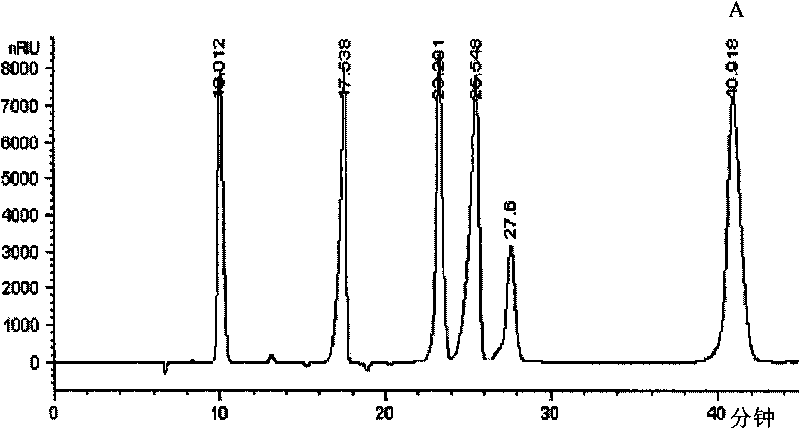Recombinant blue-green algae
A cyanobacteria and sequence technology, applied in recombinant DNA technology, unicellular algae, enzymes and other directions, can solve the problems of unsolved development of bio-energy and food, high cost of raw materials, unfavorable operation and other problems
- Summary
- Abstract
- Description
- Claims
- Application Information
AI Technical Summary
Problems solved by technology
Method used
Image
Examples
Embodiment 1
[0104] Embodiment 1, the recombination construction of the freshwater cyanobacteria Synechocystis of Chromococcus family Synechocystis
[0105] The starting cyanobacteria used in this example is the freshwater cyanobacterium Synechocystis sp. PCC6803.
[0106] 1. Introduction of genes related to butanol synthesis into the starting bacteria
[0107] The genes related to butanol synthesis in this experiment are composed of crt gene, bcd gene, etfB gene, etfA gene and hbd gene, forming a crt operon, and each gene is from Clostridium.
[0108] 1. Amplification of the crt operon:
[0109] Extract Clostridium acetobutylicum genomic DNA;
[0110] Primers were designed according to the DNA sequence of the crt operon in the Clostridium acetobutylicum genome and the restriction site on the cyanobacteria expression vector pAM2770 as follows:
[0111] crtF: ATTC GAGCTC AATGGAACTAAACAATGTCATCCT (the underlined part is the SacI restriction site);
[0112] crtR:CG GGATCC ATGGGGATTC...
Embodiment 2
[0160] Example 2. Recombination construction of seawater cyanobacterium Synechococcus 7002 of the genus Synechococcus of Chromococcus family
[0161] The starting cyanobacteria used in this example is seawater cyanobacterium Synechococcus sp. PCC7002 (Synechococcus sp. PCC7002).
[0162] 1. Introduction of genes related to butanol synthesis into the starting bacteria
[0163] The sequence and introduction method of the introduced gene are consistent with those described in Example 1.
[0164] The recombinant cyanobacteria transformed into empty vector pAM2770 was named PCC 7002 / pAM2770.
[0165] 2. Replacement of the PHB synthase gene in the cyanobacterium Synechocystis sp.PCC 6803 with the adhe gene in the butanol synthesis pathway of Clostridium
[0166] Methods are consistent with those described in Example 1.
[0167] The cyanobacteria that introduced both the empty vector pAM2770 and the empty vector pUC18 was named PCC7002 / pAM2770 / pUC as a control; the cyanobacteria t...
PUM
 Login to View More
Login to View More Abstract
Description
Claims
Application Information
 Login to View More
Login to View More - R&D
- Intellectual Property
- Life Sciences
- Materials
- Tech Scout
- Unparalleled Data Quality
- Higher Quality Content
- 60% Fewer Hallucinations
Browse by: Latest US Patents, China's latest patents, Technical Efficacy Thesaurus, Application Domain, Technology Topic, Popular Technical Reports.
© 2025 PatSnap. All rights reserved.Legal|Privacy policy|Modern Slavery Act Transparency Statement|Sitemap|About US| Contact US: help@patsnap.com



